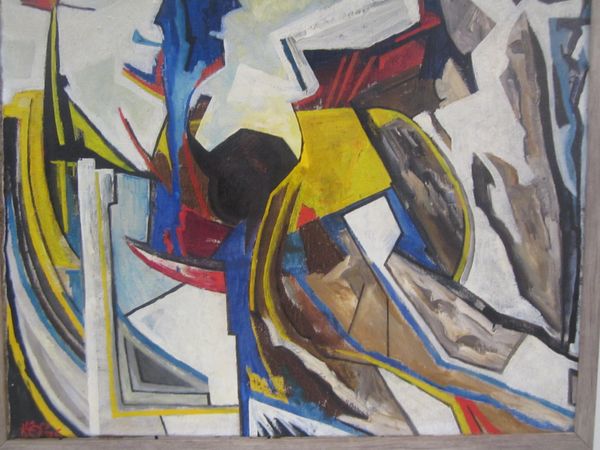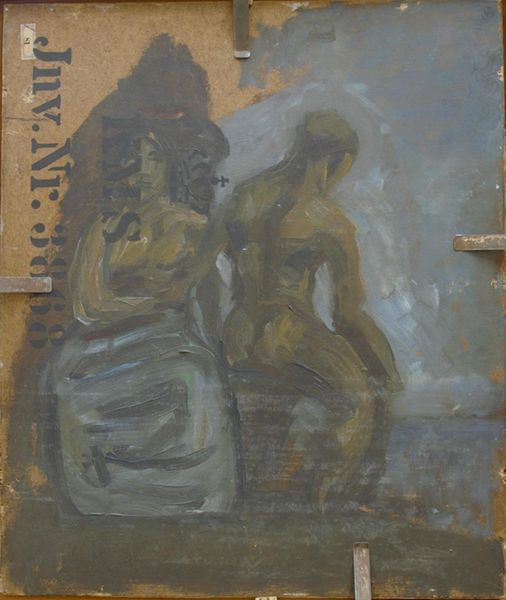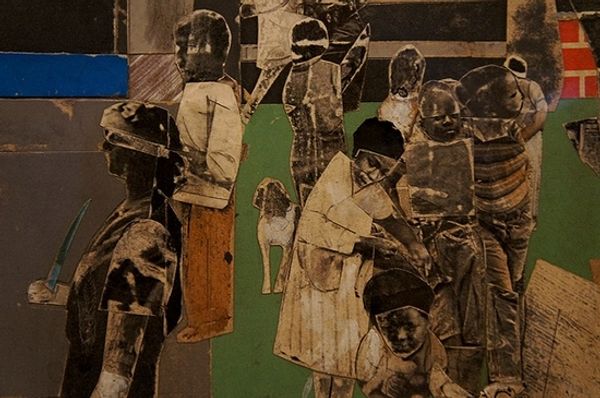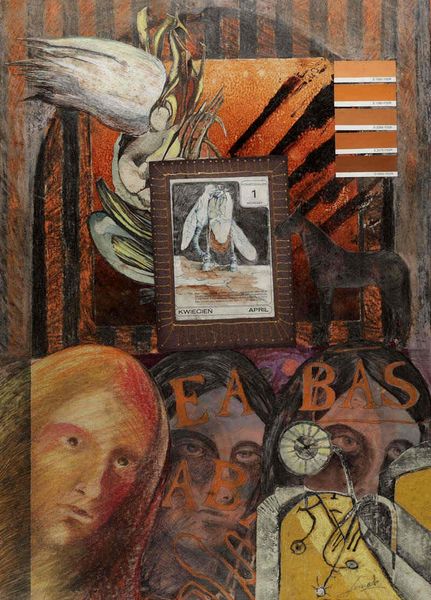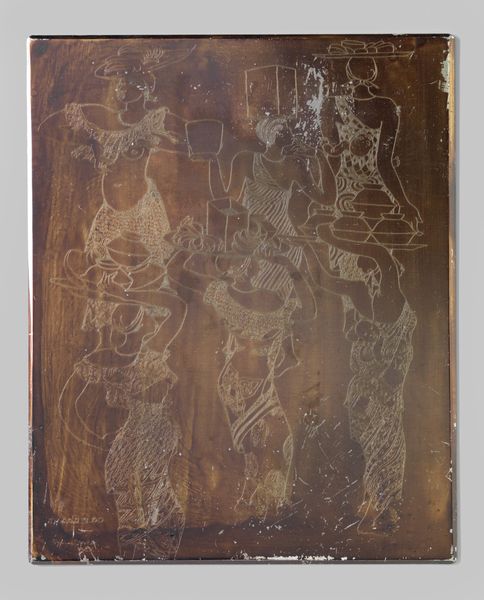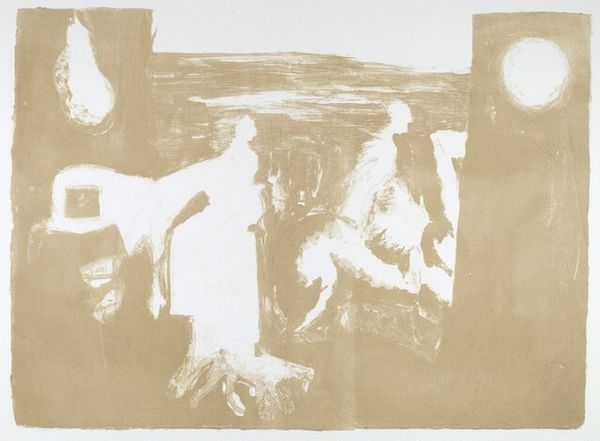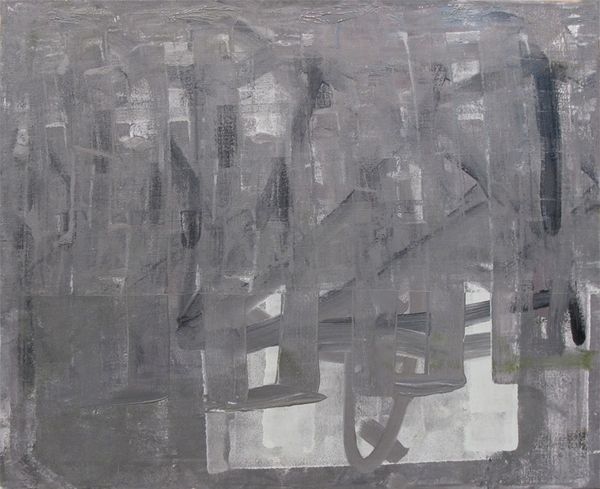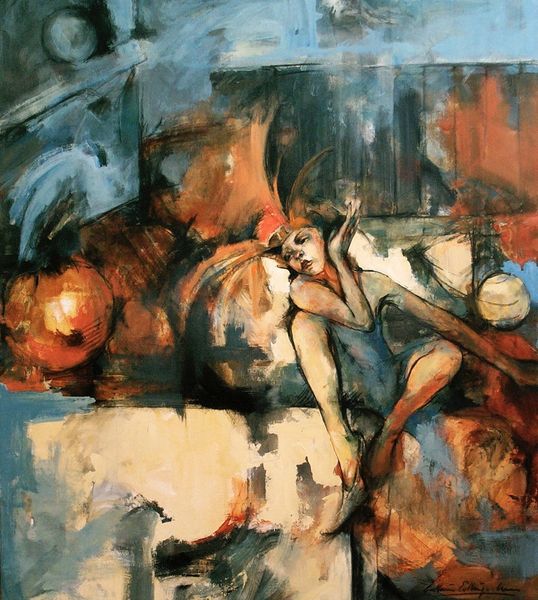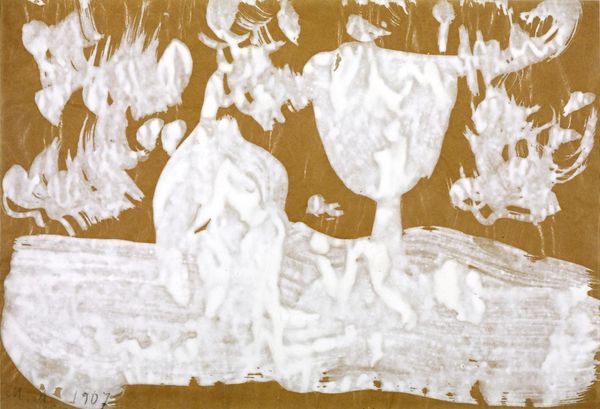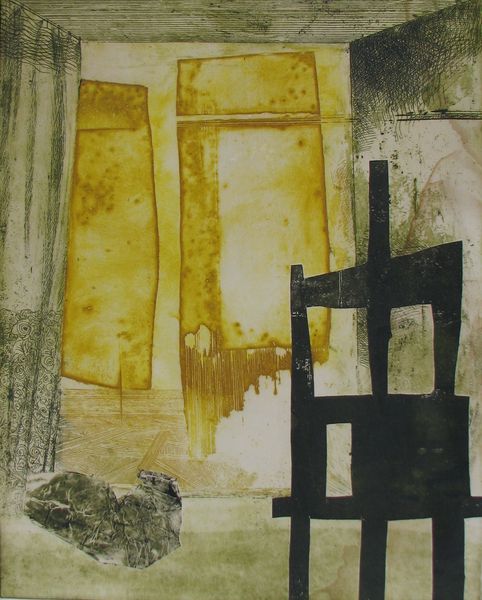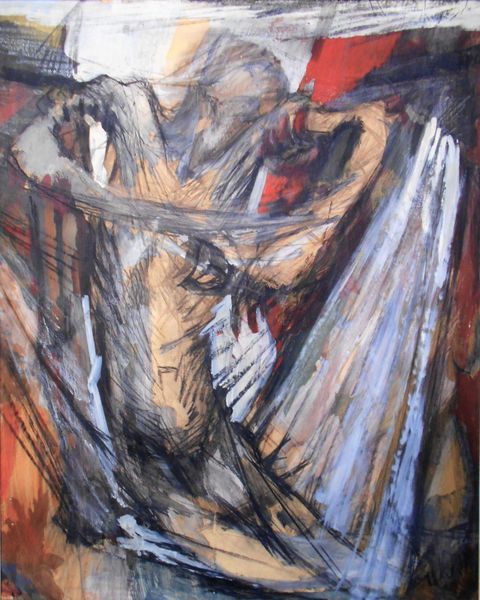
painting, acrylic-paint
#
abstract-expressionism
#
painting
#
acrylic-paint
#
figuration
#
form
#
abstraction
Copyright: Manuel Felguérez,Fair Use
Curator: This acrylic painting by Manuel Felguérez, simply titled "Untitled," was completed in 1969. What are your initial thoughts on the piece? Editor: Stark and enigmatic! The interplay of rigid, geometric forms with the ambiguous human figure creates an almost unsettling tension. Curator: Felguérez was a key figure in the Abstract Expressionist movement in Mexico, seeking to break away from representational art. How do you see his engagement with form contributing to or commenting on this ambition? Editor: Look at how the impasto is built up, thick layers creating a physical presence! The texture isn't just surface decoration, but an intrinsic element that speaks to a deep materiality, almost like clay being molded. In that sense, it embraces both industrial processing techniques and manual construction—a convergence that perhaps embodies a transition within artistic labour during that time. Curator: Fascinating point. But consider the composition itself— the stark contrast between the angular blocks on the right and the softly rendered, though abstract, human form. Do you see that dissonance reflecting a broader social or political context of the era? Editor: Possibly. Though my feeling here focuses more on Felguérez playing with the traditional notions of form. It isn’t solely about what is depicted, but how those depictions challenge the viewer’s expectations. The color palette, for example; earthy ochres and grays contained by this vibrant yellow frame— it sets the piece apart. Curator: True. I appreciate your point about the disruptive palette. When you analyze it formalistically like that, this “Untitled” painting reveals Felguérez's adept control over the fundamental aspects of art making—texture, color, composition— to communicate a complex internal landscape. Editor: Absolutely, a visual discord that lingers and resonates. And what resonates most is that this materiality isn’t just about surfaces, but the history embedded within its creation. Curator: Well said. It gives us so much to ponder concerning both form and its function. Editor: Precisely. A convergence point of aesthetic intent and lived, human experience!
Comments
No comments
Be the first to comment and join the conversation on the ultimate creative platform.
